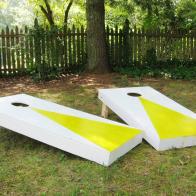1 / 15
Photo: Image courtesy of MtCubaCenter.org
Turk’s Cap Lily (Lilium superbum)
Spotted orange petals peel back on the blooms of this eye-catching native bulb. Turk’s cap lily grows to heights of 7 feet in ideal conditions—with moist soil and full sun. Flowers appear atop stems in midsummer and beckon hummingbirds. Gardeners typically draft this easy-growing native for cottage or rain gardens. Plants are hardy in Zones 5 to 8.









